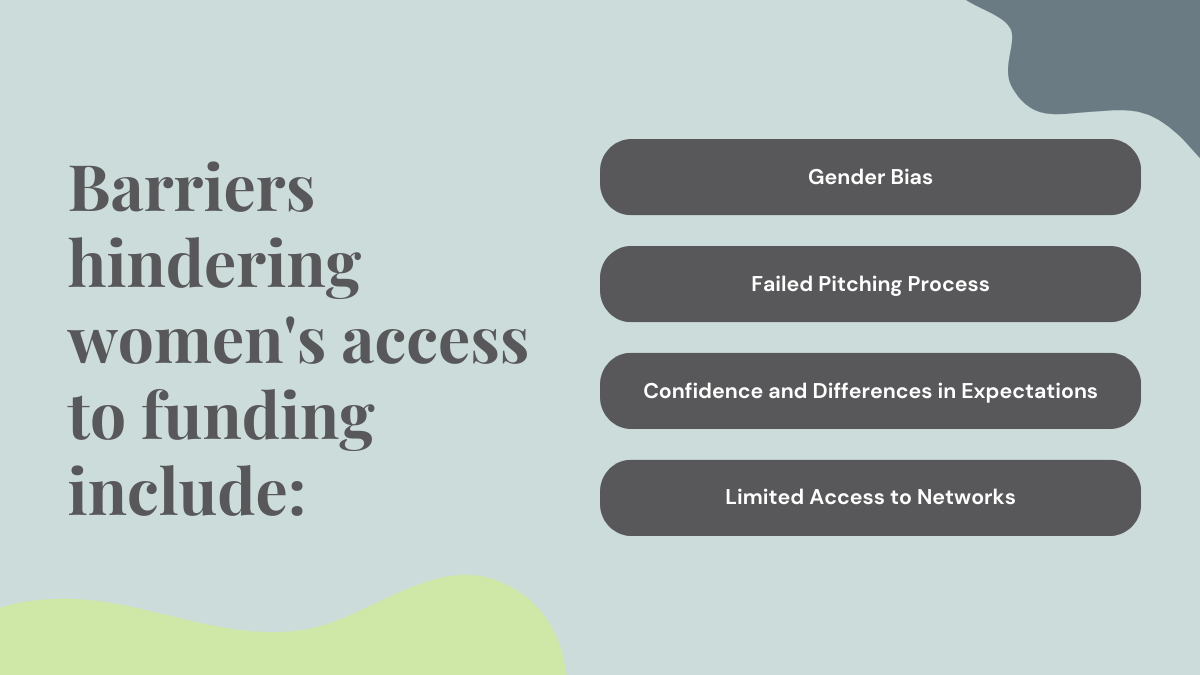What Are the Challenges and Barriers Women Face in Finding Financing?
Women-owned businesses contribute $150 billion to the Canadian economy and are responsible for employing more than 1.5 million people.
But despite the significant role women play in the entrepreneurial ecosystem, why is it that, on average, women launch businesses with 53% less capital than men?
While the entrepreneurship pendulum is swinging more toward diversity, women founders continue facing unique challenges when securing financing for their ventures.
Why the funding discrepancy? Here are some of the multifaceted barriers that hinder women's access to funding and the broader implications for gender equality in the capital landscape.
Gender Bias
Despite progress in acknowledging gender equality, deeply ingrained biases and stereotypes still run strong in the business and capital sectors. Women often find themselves up against preconceived notions about their capabilities, with some investors favouring men entrepreneurs.
62% of women entrepreneurs say they’ve experienced some form of gender bias during the funding process.
Consider the “like me” effect as explained by UBS:
When people tend to like people who look, act like, or remind them of themselves, this is referred to as homophily. Such homophily frequently manifests itself in the venture funding world, where the overwhelming majority of investors are men (with 70% of these being white men). Indicatively, only about 12% of decision-makers at US venture capital firms are women.
That said, challenging gender bias requires more diverse representation.
VC firms with women partners are twice as likely to fund other women founders and three times as likely to invest in women CEOs. When a woman is on the investment team of a venture capital company, that company is 40% more likely to invest in a company with a woman on the executive team.
Failed Pitching Process
Bias not only affects the decision-making process but also influences the type of questions and expectations directed at female founders during pitches.
One study revealed that in VC pitch sessions, women and men face unique question sets. During Q&A interactions at a TechCrunch competition with 180 entrepreneurs and 140 VCs, men consistently fielded more questions focused on 'promotion’ (emphasizing upsides and potential gains), while women received more 'preventive' questions (highlighting potential losses and risk management).
Entrepreneurs responding to promotion questions raised at least six times more funding compared to those asked preventive questions.
With this lopsided process and many investors failing to recognize the potential of women-led ventures, women entrepreneurs are left to navigate a pitch process that isn't designed to accommodate their unique perspectives and business models.
Confidence and Differences in Expectations
There’s a little big something called the confidence gender gap, where women tend to undervalue themselves compared to men in competitive situations, and thus come off to potential investors as "less sure of themselves."
Research shows women tend not to ask for financing as often as their male counterparts, and they would generally ask in scenarios where they believe they have a high chance of approval. Furthermore, if women aren't confident about their financial acumen, they tend to refrain from asking.
And so puts women in a vicious spiral: women are fundraising on an uneven playing field, undervaluing themselves, and facing the fear of rejection more than their male counterparts.
Self-perception and confidence are important parameters that affect how many women will pursue their entrepreneurship journey.
Limited Access to Networks
When raising, it’s often about making connections and who you know; networking plays a pivotal role in deal sourcing, deal syndication, and decision-making.
In 2021, Canadian women accounted for 19.4% of partners at venture capital firms. With few seats at the table and the difficulty of breaking into the old boys’ club, women often face limited access to the networks that can provide crucial connections, mentorship, and opportunities.
Recall the existing gender bias and the “like me” effect: male-dominated professional circles make it challenging for women to establish the connections necessary for business growth and accessing the vital resources and support systems available to their male counterparts.
Though there's progress to celebrate (we don't want to minimize our hard work!), the cycle of bias continues, and the entire system needs to change—from confidence and capacity building to who’s writing the cheques.
Where’s a good place to start? How can you push the needle toward gender equity in the capital landscape?
Awareness on the issue (check! ✔️)
Look into programs to build acumen and capacity (see: the M51 Financial Feminism Investing Lab)
Get involved within the ecosystem and in the community
Explore ways you can support women founders through different forms of your capital (human, intellectual, financial)
Look at the capital assets you deploy everyday and start making different decisions
Surround yourself with those who have more experience and learn from them—build those networks!
For questions on doing more and getting deeper involved, we'd love to chat.
Aligning the intention of impact investing to our mission of affording people of underrepresented genders opportunities to learn about and activate their investing and entrepreneurship potential, we’re thrilled to partner with the Small Scale Food Processor Association (SSFPA) on their Venture-Capital Ready: Investment Training for Women Entrepreneurs program.
Venture-Capital Ready is aimed at food industry women/intersectional entrepreneurs ready to present themselves and their business for investment and scale up to meet market demand.
Within the two-year program, M51 is facilitating a four-module investor curriculum to guide participants through the fundamentals of early-stage investing with a focus on impact investing and the Canadian food and agriculture sector.
Keep an eye out on our blog and social media to follow along with the modules and as we share more resources around impact investing, food and agriculture, and building the world we want to live in—today and for future generations.



